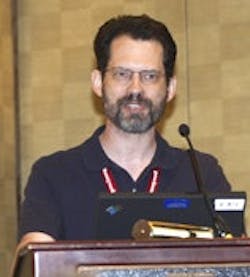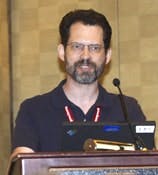Experion PKS Goes Nuclear at Progress Power Plant
Much of the U.S. nuclear power industry is facing the same support challenge: Plants built in the 1960s and 1970s are still equipped with vintage controls. These pneumatic and electronic systems are aging, becoming obsolete and causing instrumentation maintenance backlogs to increase.
We started doing digital upgrades as point solutions, really because we had no choice, said Dave Hooten, supervisor of electrical, instrumentation and controls engineering at Progress Energys Harris 1 nuclear power plant near Raleigh, N.C. But pretty soon, the various digital control upgradespursued on an ad hoc basis and with no long-term planled to a range of different digital systems from a variety of vendors, all of which operated differently and did not communicate with each other. We realized we had to spend smarterin a more long-term, intelligent fashion, Hooten said in his presentation to the Honeywell User Group gathering this week in Phoenix.
We realized we had to spend smarterin a more long-term, intelligent fashion. Progress Energys Dave Hooten discussed his companys implementation of the Experion PKS control platform at its nuclear power stations, the first Experion installations in the U.S. commercial nuclear fleet.
Once the infrastructure was in place, however, several identified Experion projects were put off for a variety of reasons until a perfect first application was identified: the reactor auxiliary building ventilation system at Harris 1. The aging ventilation controls constantly demanded attention because of frequent failures, Hooten said, and while the application was not high-risk, systems failures were irksome to employees working routine. The company replaced the older pneumatic controllers with Experion PKS and HART-equipped field instruments. Honeywells PID-PL (Profit Loop) was used to auto-tune the various loop involved, saving us countless hours of trial and error, Hooten said.
The recommendations and lessons learned by Hooten and his team during this first successful Experion application include:
- Stay current with software releases during systems development. This should help to reduce the number of problems identifiedand patches requiredon a one-at-a-time basis.
- Test over all known operating conditions and address process noise in the transmitters themselves. Upon start-up, Hooten found that the expedient step of damping process noise in the control system function block caused several unanticipated interactions that had to be identified and resolved.
- Moving to a digital control system may expose longstanding problems. When we finally had a decent control system, all these old problems came to the forefront, Hooten warned.
All in all, plant management sees this first Experion migration as a significant milestone, Hooten said. Other Experion projects currently identified include upgrade of the radiation monitoring systems, plant vent stack monitoring and main turbine controls. We fixed what we set out to fix, and its given our industry tangible proof that distributed control is a good thing.


